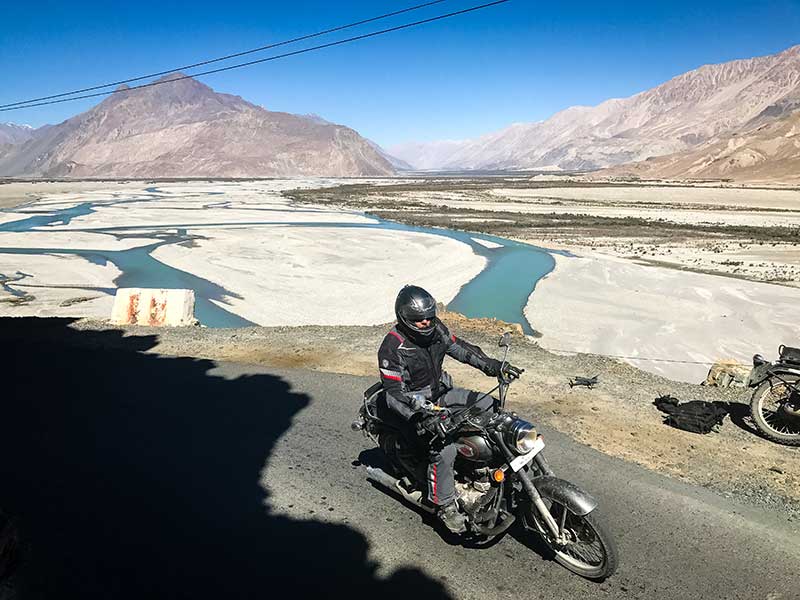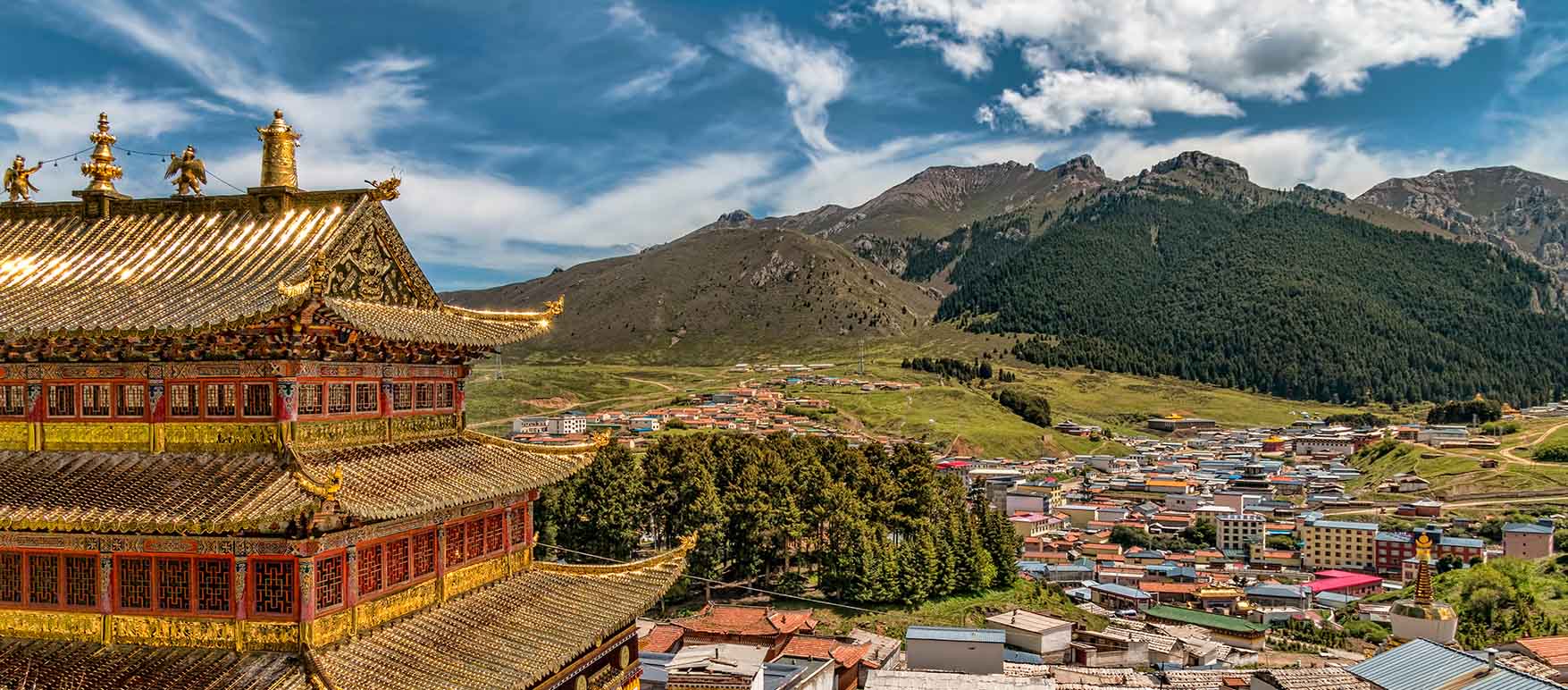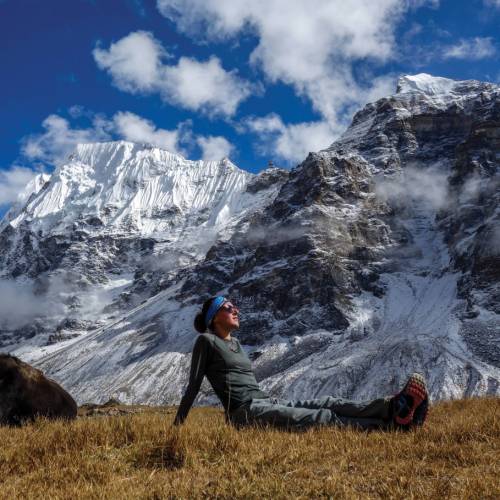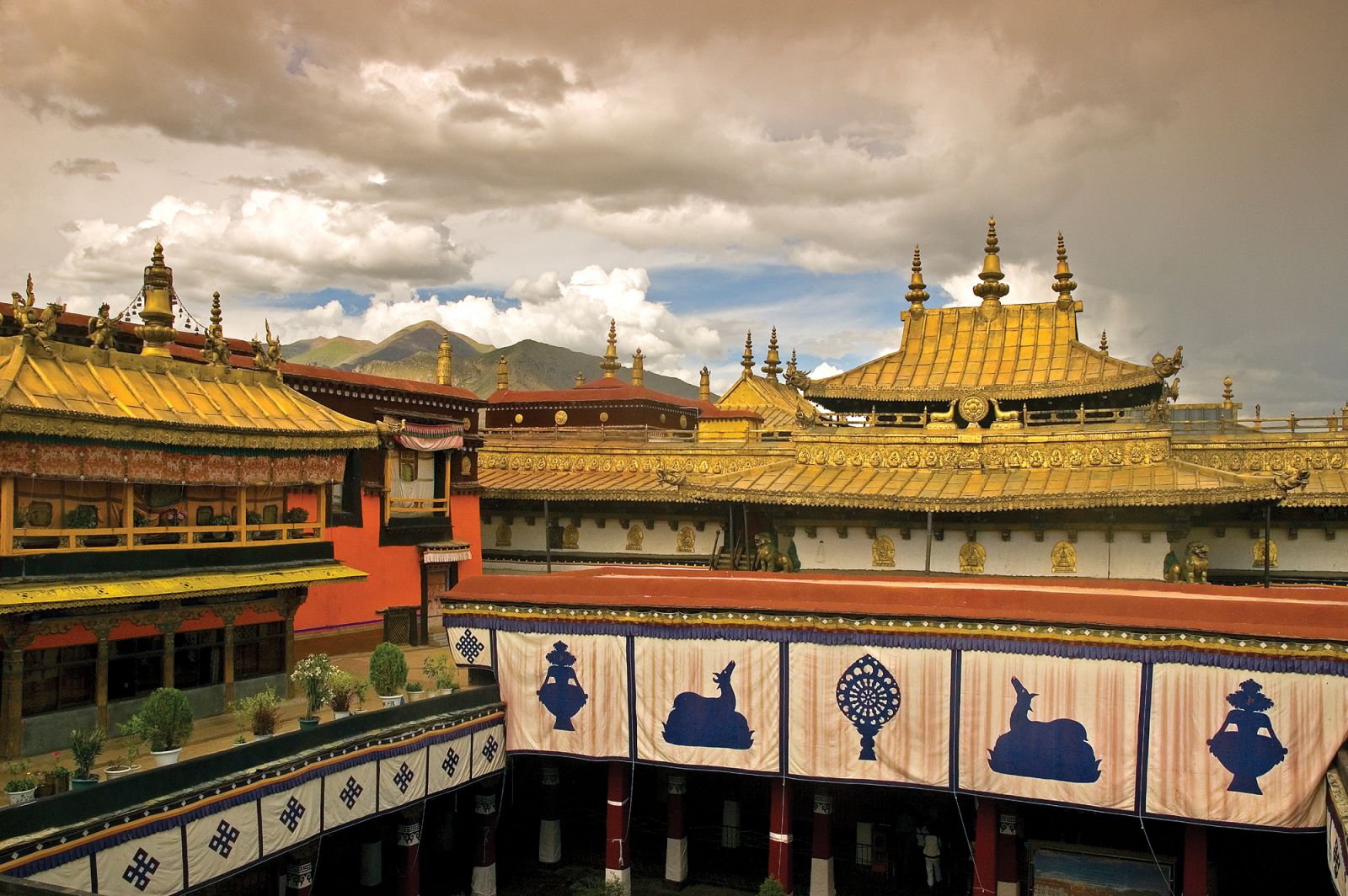The Ultimate Himalayan Escape: A Canadian's Journey to Tibet

Introduction to The Ultimate Himalayan Escape
The Call of Tibet
When one thinks of adventure, few places evoke a sense of wonder, quite like Tibet. Nestled high in the Himalayas, this mystical land, often referred to as "the Roof of the World,” has captivated the hearts and minds of explorers, culture enthusiasts, and spiritual seekers alike. The allure of its breathtaking landscapes, rich traditions, and profound spirituality beckons many to embark on a journey that promises to be unforgettable.
Tibet is not merely a destination; it is a pilgrimage into culture and history. As you gaze upon its towering mountains, such as the majestic Mount Everest, you can't help but feel a pull—an irresistible call to unravel the mysteries that lie within its borders. The sheer beauty of the region's geography, combined with the vibrancy of its culture, creates a unique experience that is both enriching and humbling.
Planning the Journey
Now that you’ve set your sights on this extraordinary adventure, planning your journey becomes the next exciting step. Preparing for a trip to Tibet can seem daunting, but it’s all part of the adventure. Here are some essential aspects to consider as you set the foundation for your ultimate Himalayan escape:
- Best Time to Visit:
- Spring (April to June) and autumn (September to November) are the ideal seasons for travelling, offering mild weather and stunning landscapes.
- Winter (December to February) can be quite harsh, while summer may bring rain.
- Permits and Regulations:
- Travelling to Tibet requires special permits, especially for international tourists. Ensure you arrange these well in advance.
- Collaborating with a travel agency can ease this process and guarantee that you have all the necessary documentation.
- Choosing a Travel Route:
- Consider starting your journey in Lhasa, the heart of Tibet, where you can acclimatize to the altitude while soaking in the rich history of the region.
- Other popular routes include visiting Gyantse and Shigatse or even undertaking the famed trek to Everest Base Camp.
- Packing Essentials:
- Layered clothing is vital due to fluctuating temperatures. Don’t forget a good pair of trekking boots and a reliable daypack.
- Bring along a reusable water bottle, sunscreen, and basic medications for altitude sickness.
- Cultural Considerations:
- Respect local customs and traditions. Learning a few phrases in Tibetan can go a long way in connecting with locals.
- Prepare for unique cultural experiences, such as participating in local festivals or Buddhist ceremonies.
By thoughtfully planning your trip and taking the time to prepare, you'll not only enhance your experience but also embrace the enchanting calls of Tibet. It’s an opportunity to step away from the hustle and bustle of modern life and immerse yourself in a world that feels decidedly timeless. As you take the first steps on this incredible journey, get ready for a blend of exploration, discovery, and transformation that the Ultimate Himalayan Escape promises to deliver.

Exploring Lhasa: The Heart of Tibet
As you embark on your journey through Tibet, Lhasa stands as the vibrant cultural heart of the region, beckoning with its rich history and spiritual significance. Once you arrive, you’ll discover that Lhasa is not just a place but an experience that immerses you in the soul of Tibetan life. Ready your senses to explore the architectural marvels and the bustling streets that define this city.
Visiting Potala Palace
Your exploration begins with a visit to the iconic Potala Palace, a UNESCO World Heritage Site and a symbol of Tibetan spirituality. Perched on Marpo Ri Hill, this magnificent structure reaches for the sky and offers a glimpse into the regal past of the Dalai Lamas.
- Highlight Features:
- The palace consists of over 1,000 rooms, grand staircases, and extensive murals that narrate Tibet's rich history.
- Don’t miss the awe-inspiring corridor that leads to the tombs of previous Dalai Lamas—the intricate artistry is nothing short of breathtaking.
As you wander through its halls, you can almost feel the whispers of history. The view from the rooftop is spectacular, providing a panoramic vista of Lhasa against a backdrop of stunning snow-capped mountains. Be sure to have your camera ready; this is a moment you will want to capture. Do set aside sufficient time while visiting, as exploring Potala Palace is more than just a quick tour; it’s an invitation to reflect on the profound religious and cultural significance that permeates this architectural wonder.
Walking the Barkhor Street
After soaking in the history at Potala Palace, a stroll down Barkhor Street offers a delightful change of pace. This lively street around Jokhang Temple is a whirlpool of sights, sounds, and smells—a microcosm of Tibetan culture.
- Key Attractions:
- Often bustling with pilgrims performing kora (a religious circumambulation), Barkhor Street is lined with shops selling traditional handicrafts, jewellery, and Tibetan artefacts.
- Be sure to sample some local street food, such as momos (Tibetan dumplings) and yak butter tea—a must-try for any visitor.
As you navigate through the narrow lanes, you might even encounter local artisans showcasing their crafts. Engaging in a conversation or two with them can provide insight into their traditions and way of life. Walking the Barkhor allows you not just to observe but to engage with the local community in a meaningful way—feel the warmth and hospitality of the Tibetan people as you share smiles and stories.
In the heart of Lhasa, both the Potala Palace and Barkhor Street serve as gateways to understanding Tibet’s rich cultural heritage. They pave the way for adventure, allowing you to steep yourself in an invaluable experience that transcends mere tourism. Conclusively, Lhasa invites you to embrace its beauty, savour its stories, and discover the essence of Tibetan life.

Immersing in Tibetan Culture and Traditions
Having basked in the beauty and significance of Lhasa, the journey continues as you delve deeper into the heart of Tibetan culture and traditions. This land is not just about stunning vistas; it's a rich tapestry of history, spirituality, and daily life that’s waiting to be explored. You can do this by engaging in unique experiences like attending a traditional Buddhist ceremony and learning the art of making Tibetan butter tea.
Attending a Buddhist Ceremony
No trip to Tibet would be complete without experiencing the profound spirituality that permeates the air. Attending a Buddhist ceremony offers an immersive glimpse into the practices that shape the lives of many Tibetans.
- What to Expect:
- These ceremonies often take place in monasteries or temples and are usually filled with chanting incense and the rhythmic sound of the drums.
- You may witness monks in their distinctive red robes, deeply engrossed in prayer, as they offer their blessings and light lamps for various deities.
Picture yourself stepping into a sunlit courtyard surrounded by aged stone walls, where the air is thick with the scent of juniper and butter lamps. The atmosphere is almost palpable as devotees engage in rhythmic chanting and the gentle clashing of cymbals.
Participating in such a ceremony is not merely an observation; it’s an open door to understanding Tibetan beliefs. And while you may not grasp every detail, the universal language of devotion and community will resonate deeply, leaving you with a sense of connection to this ancient culture.
Learning to Make Tibetan Butter Tea
To deepen your immersion, learning to make Tibetan butter tea is both a practical and culturally enriching experience. This traditional beverage, known as “po cha,” is a staple in Tibetan households and is often enjoyed at family gatherings and social events.
- Key Ingredients:
- Black tea
- Yak butter (or regular butter as an alternative)
- Salt
- Optional: Milk and spices (such as cardamom)
Making Tibetan butter tea is straightforward yet rewarding. Here’s a simple step-by-step guide to recreate it:
- Brew the Tea: Start by boiling water and adding black tea leaves. Let it steep for about 5-10 minutes.
- Blend: In a traditional method, use a tea churn or blender to mix the brewed tea with yak butter and a pinch of salt. The goal is to create a frothy, creamy texture.
- Adjust to Taste: You can add milk or more butter according to your preference, ensuring that it balances the salty and creamy elements.
As you sip on this warm, salty tea, you’ll not only be tasting a pivotal part of Tibetan hospitality but also sharing in the warmth and connection that accompanies its preparation. Conversations over a cup of butter tea often lead to lively exchanges about customs, beliefs, and stories.
Engaging in these cultural practices forms the true essence of your Tibetan adventure. They offer layers of understanding that textbooks can't impart—transforming a simple visit into a heartfelt journey of discovery. Through these experiences, you become more than just a visitor; you become part of the living narrative of Tibetan culture.

Trekking through the Himalayas
As you bask in the warmth of Tibetan culture and traditions, your Himalayan adventure is about to reach new heights—literally! Trekking through the stunning landscapes of the Himalayas introduces you to another layer of the Tibetan experience. With iconic peaks like Mount Everest on the horizon, the journey is both challenging and breathtaking.
Route to Mount Everest Base Camp
Setting out on the route to Mount Everest Base Camp (EBC) is more than just a hike; it’s an exhilarating journey that captures the essence of adventure. The trek typically begins in the town of Lukla, where you’ll be greeted by the exhilarating sight of the world’s most famous mountain range.
- Trek Highlights:
- Stunning Views: As you ascend, prepare to be awestruck by panoramas of towering peaks, including Ama Dablam, Lhotse, and, of course, Everest itself.
- Cultural Encounters: Along the way, you’ll pass through picturesque Sherpa villages, where you can experience local hospitality and visit colourful monasteries.
The trek covers approximately 130 kilometres (around 80 miles) and generally takes about 10 to 14 days to complete. You’ll traverse diverse terrains, from lush forests to rocky trails, and face altitude changes that will test your stamina. Before you embark, here are a few essential tips for a successful trek:
- Acclimatization: Take the time to acclimatize properly. It’s crucial to avoid altitude sickness by ascending slowly and staying hydrated.
- Guides and Porters: Hiring an experienced guide and porter can enhance your experience significantly, ensuring you navigate the region safely.
Being surrounded by some of the planet’s highest peaks is a humbling and surreal experience. As you approach EBC, the journey becomes a physical and emotional journey of self-discovery, surrounded by nature's grandeur.
Camping under the Stars
Once you arrive at Base Camp, the adventure doesn’t end. Camping under the stars in the Himalayas is an unforgettable experience. Picture this: After a long day of trekking, you set up your tent, and as night falls, the sky transforms into a canvas of twinkling stars and the gentle glow of the moon illuminating the mountains.
- Camping Essentials:
- A warm sleeping bag
- A sturdy tent (a good trekking agency will provide this)
- Layers of warm clothing (temperatures can drop significantly at night)
As you relax after an exhilarating day, gather around the campfire with fellow trekkers to share stories and laughter. The absence of urban distractions makes the conversations more meaningful and leaves lasting impressions. Stargazing in the Himalayas is like entering a whole new world. With minimal light pollution, constellations, shooting stars, and sometimes even the Milky Way are more vivid than you’ve ever seen.
The silence of the night, occasionally broken by the distant roar of avalanches or the rustling of wildlife, creates a moment of profound tranquillity. These moments beneath the starry sky serve as the perfect bookend to your adventure through the Himalayas. They remind you of the beauty, wonder, and thrill of being present in nature.
Trekking to Mount Everest Base Camp is not just an achievement; it's a celebration of life itself, filled with unforgettable experiences that rejuvenate the spirit and kindle a love for adventure that lasts a lifetime.

Encountering Tibetan Wildlife
After an exhilarating trek through the Himalayas, filled with breathtaking landscapes and unforgettable experiences, it’s time to turn your attention to the incredible wildlife that calls this region home. The Tibetan highlands offer a unique ecosystem brimming with diverse species, providing countless opportunities to witness nature in its most pristine form. Get ready to embrace the wonder of encountering Tibetan wildlife.
Spotting Himalayan Blue Sheep
One of the most iconic animals that you may encounter along your journey is the Himalayan blue sheep, or “naur” as it is locally known. These agile creatures, characterized by their striking blue-grey coats and curved horns, are perfectly adapted to the rugged terrains of the Himalayas.
- Best Locations:
- Langtang National Park: This area is known for its population of blue sheep, offering great vantage points for spotting them.
- Tserko Ri and Ganja La: Both trails in the Langtang region often reward trekkers for sighting these magnificent animals.
When you spot a herd of Himalayan blue sheep grazing on steep cliffs or bounding effortlessly across rocky slopes, you’ll witness the beauty of nature in motion. It’s a fantastic reminder of the resilience and adaptability of life in extreme environments.
Keep your camera at the ready and be patient—these shy animals may not always be visible from the trail. Observing their behaviour in their natural habitat can be a delightful experience. It’s a moment where the harmony of nature unfolds before your eyes, making the trek even more rewarding.
Birdwatching in the Himalayan Valleys
In addition to blue sheep, the Himalayas boast a remarkable array of birdlife that attracts birdwatchers from around the globe. The varied ecosystems create an ideal sanctuary for both residents and migratory birds.
- Notable Species to Look Out For:
- Snow Partridge: These plump, ground-dwelling birds blend seamlessly into their rocky surroundings.
- Tibetan Snowcock: Often found at higher elevations, spotting this elusive bird is a reward for keen observers.
- Himalayan Monal: The dazzling colours of this pheasant are nothing short of spectacular, making it a prized sighting.
Consider bringing a pair of binoculars to enhance your birdwatching experience. It’s not just about spotting birds; it’s about listening to their melodies and observing their behaviours. The blend of the crisp mountain air with the songs of various birds creates a symphony that echoes through the valleys.
Many trekkers report moments of pure joy when they’ve spotted a rare species hidden among the branches or soaring high above. Birdwatching is an immersive way to connect with the environment, offering insights into the delicate balance of the Himalayan ecosystem. The chance to encounter both the impressive Himalayan blue sheep and the vibrant birdlife of the valleys elevates your Himalayan experience to new heights.
These encounters with wildlife not only enrich your adventure but also deepen your understanding of the natural world, leaving you with cherished memories as you continue your journey through this breathtaking region. The Himalayas are not just a backdrop for your trek; they are alive with stories that invite you to explore, appreciate, and ultimately respect the beauty of nature in all its forms.
